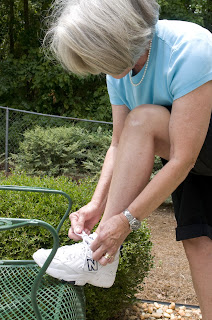Teach me to do your will, for you are my God; may your good Spirit lead me on level ground.
This past weekend, I ran 10 miles into and around Branson, Mo. If you've ever been there, you know it's a very hilly place.
As a result, my time was slower than normal, and I had some sore leg muscles!
Several months before, I fell. Pretty hard. I was running down a sidewalk I've run on numerous times before. A small unlevel spot caught me, and the next thing I knew, I was rolling onto the concrete and grass nearby. Fortunately, I wasn't seriously injured.
In both cases, though, I didn't regret my running at all. Running is my time to reflect, time to challenge myself, time to pray and praise.

Figuratively - if not literally - we've all encountered hills and even small rough spots that become obstacles. While taking on obstacles might strengthen us, our spirits often need some distraction-free level ground when we are ready to connect with God.
Follow him to that level ground.
(Photo midway through a hill I ran in Branson, Mo., from Google Maps)





























